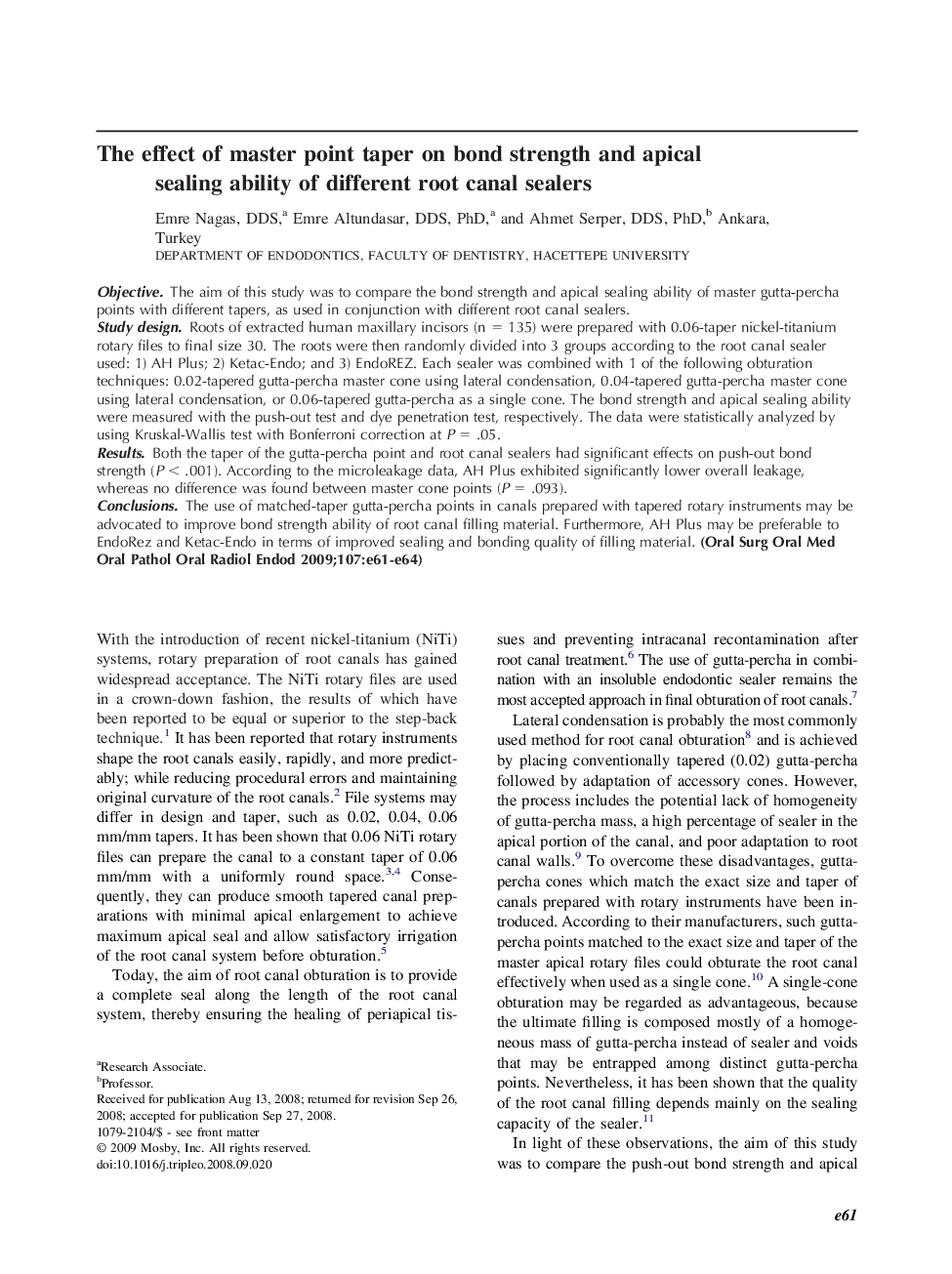| Article ID | Journal | Published Year | Pages | File Type |
|---|---|---|---|---|
| 3168483 | Oral Surgery, Oral Medicine, Oral Pathology, Oral Radiology, and Endodontology | 2009 | 4 Pages |
ObjectiveThe aim of this study was to compare the bond strength and apical sealing ability of master gutta-percha points with different tapers, as used in conjunction with different root canal sealers.Study designRoots of extracted human maxillary incisors (n = 135) were prepared with 0.06-taper nickel-titanium rotary files to final size 30. The roots were then randomly divided into 3 groups according to the root canal sealer used: 1) AH Plus; 2) Ketac-Endo; and 3) EndoREZ. Each sealer was combined with 1 of the following obturation techniques: 0.02-tapered gutta-percha master cone using lateral condensation, 0.04-tapered gutta-percha master cone using lateral condensation, or 0.06-tapered gutta-percha as a single cone. The bond strength and apical sealing ability were measured with the push-out test and dye penetration test, respectively. The data were statistically analyzed by using Kruskal-Wallis test with Bonferroni correction at P = .05.ResultsBoth the taper of the gutta-percha point and root canal sealers had significant effects on push-out bond strength (P < .001). According to the microleakage data, AH Plus exhibited significantly lower overall leakage, whereas no difference was found between master cone points (P = .093).ConclusionsThe use of matched-taper gutta-percha points in canals prepared with tapered rotary instruments may be advocated to improve bond strength ability of root canal filling material. Furthermore, AH Plus may be preferable to EndoRez and Ketac-Endo in terms of improved sealing and bonding quality of filling material.
